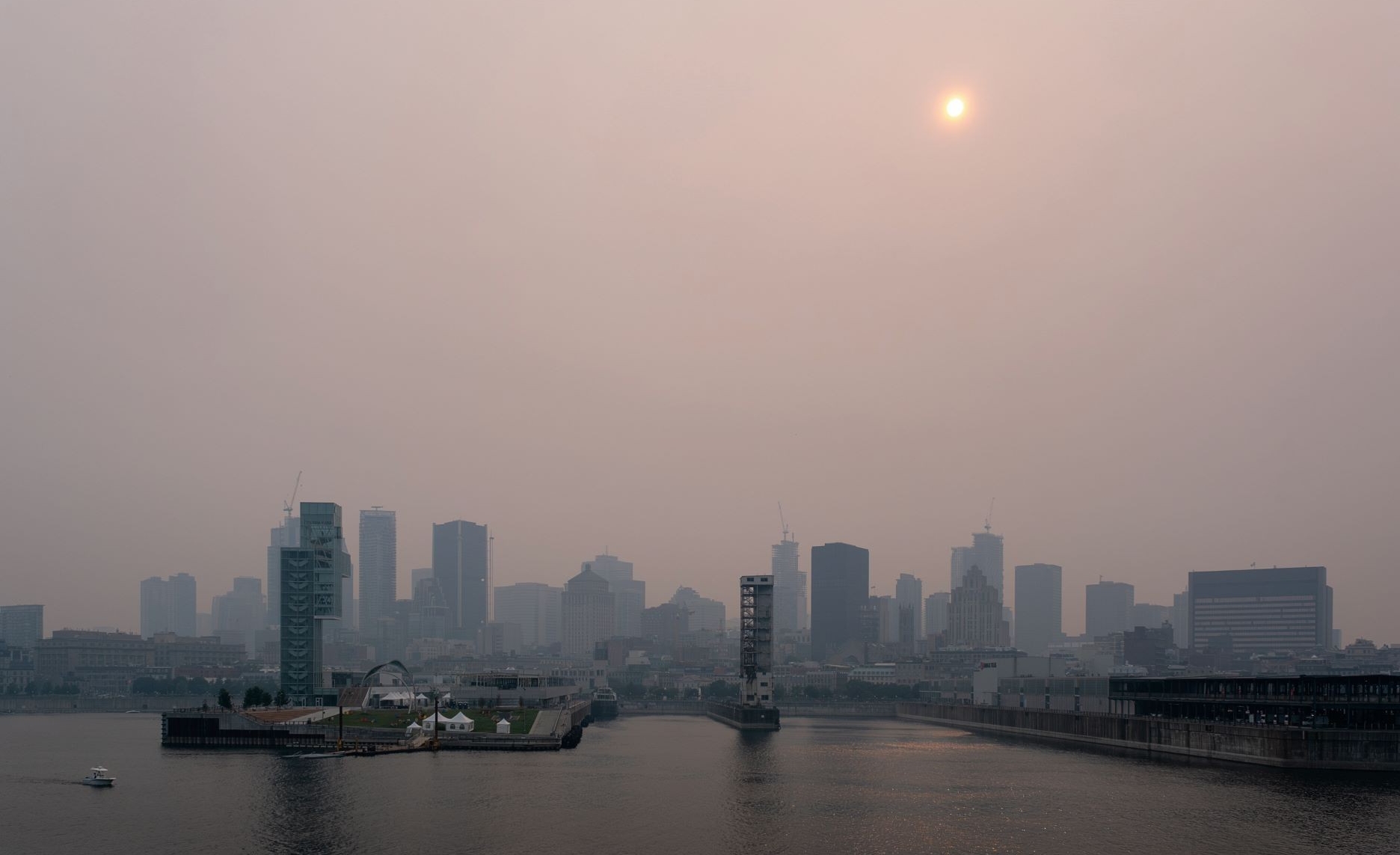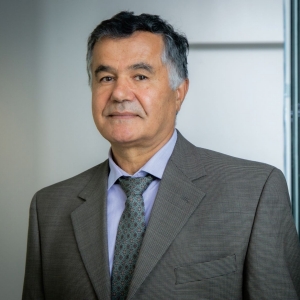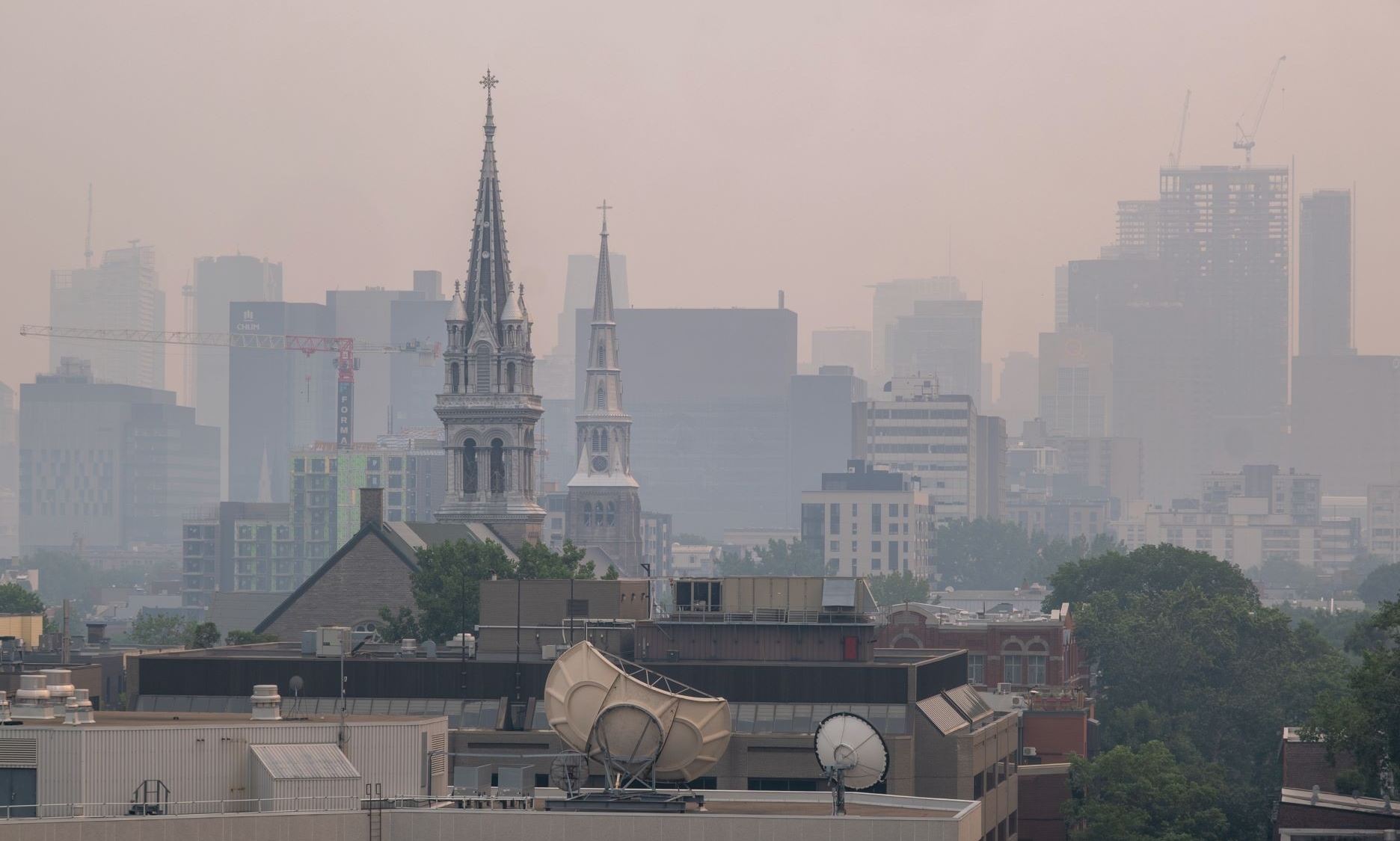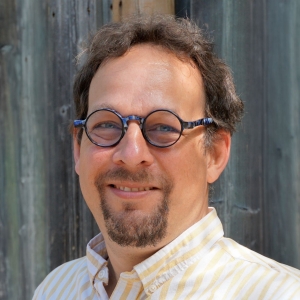Working closely with industry partners, Haghighat and his fellow researchers have two primary tasks: testing indoor materials to determine the source of contaminants, and developing technologies and methods to purify the air.
“One of the big issues here is the buildings themselves and the materials inside of them,” says Haghighat. “Look at your desk, the walls around you — they’re painted. Look at the carpet — it’s synthetic material. So many materials are synthetic, and if they’re brand new, they emit gases. If they’re old, they decompose and can also release gases.”
Other than VOCs, some of the more common contaminants found inside buildings include carbon monoxide brought in by air intakes, dust mites from carpets and fabrics, moulds and bacteria from damp areas and stagnant water, and ozone from photocopiers and electric motors.
Another big issue is what people bring inside with them, adds Haghighat.
Back in 2009, he co-authored a report for Public Works and Government Services Canada that included an in-depth analysis of the air quality in several office buildings.
No occupant had complained about the air inside these buildings, yet the researchers found that it was contaminated with a number of harmful gases. Their concentration levels were 10 times higher than what was found outside, says Haghighat.
The main culprit: personal-care items like deodorants and hair-care products.
Photocatalytic air purification systems — which use energy from light to clean the air — are one tool that more people are using to try to combat some of these contaminants. Haghighat and his colleagues have been looking at these too, with sobering results.
“Surprise, surprise, we find that most of them make the indoor air quality worse than before,” he says.
“For example, we’ve found that when a photocatalytic airpurification system is used to remove methanol alcohol from indoor air, it created formaldehyde, which is more poisonous than the original gas.”
In response, Haghighat and his team are currently working on developing new photocatalytic air-purification systems that don’t create hazardous byproducts.
It’s not easy work, he admits. “But we’ve done some preliminary studies that are reducing them. So, you’re always trying to remain optimistic.”
Smart materials
One researcher from Haghighat’s lab who provided quite a bit of optimism was Zahra Shayegan, PhD 21.
Now a postdoctoral researcher at the Institut national de la recherche scientifique, Shayegan developed a novel solution to help degrade indoor air contaminants as a Concordia student. She not only won the university’s Doctoral Prize in Engineering and Computer Science for her efforts, but a Governor General’s Academic Gold Medal as well.


 The Port of Montreal shrouded in a haze of smoke. Several smog warnings were issued across Quebec in 2023 due to forest fires. | Photo: Shutterstock
The Port of Montreal shrouded in a haze of smoke. Several smog warnings were issued across Quebec in 2023 due to forest fires. | Photo: Shutterstock
 “One of the big issues is buildings themselves and the materials inside of them,” says Fariborz Haghighat.
“One of the big issues is buildings themselves and the materials inside of them,” says Fariborz Haghighat.
 “Imagine this: smart materials that reduce energy consumption and indoor pollutants. I think it’s going to happen soon,” says Zahra Shayegan, PhD 21.
“Imagine this: smart materials that reduce energy consumption and indoor pollutants. I think it’s going to happen soon,” says Zahra Shayegan, PhD 21.
 City of Montreal officials urged people to stay indoors where possible as city’s air quality plummeted to the worst ranking in the world by IQAir on June 25, 2023 | Photo: Shutterstock
City of Montreal officials urged people to stay indoors where possible as city’s air quality plummeted to the worst ranking in the world by IQAir on June 25, 2023 | Photo: Shutterstock
 “The pandemic showed us that we need lots of different people from lots of different countries working on
solutions together,” says Lexuan Zhong, PhD 13.
“The pandemic showed us that we need lots of different people from lots of different countries working on
solutions together,” says Lexuan Zhong, PhD 13.
 “Despite resistance to decarbonization, I don’t think we have a choice to act on this. If we continue to act,
it will be for the benefit of all of us," says Gregor Kos. | Photo: Oriane Morriet
“Despite resistance to decarbonization, I don’t think we have a choice to act on this. If we continue to act,
it will be for the benefit of all of us," says Gregor Kos. | Photo: Oriane Morriet
 “There can be more than 10,000 chemicals in the air you breathe,” says Xianming Zhang.
“There can be more than 10,000 chemicals in the air you breathe,” says Xianming Zhang.